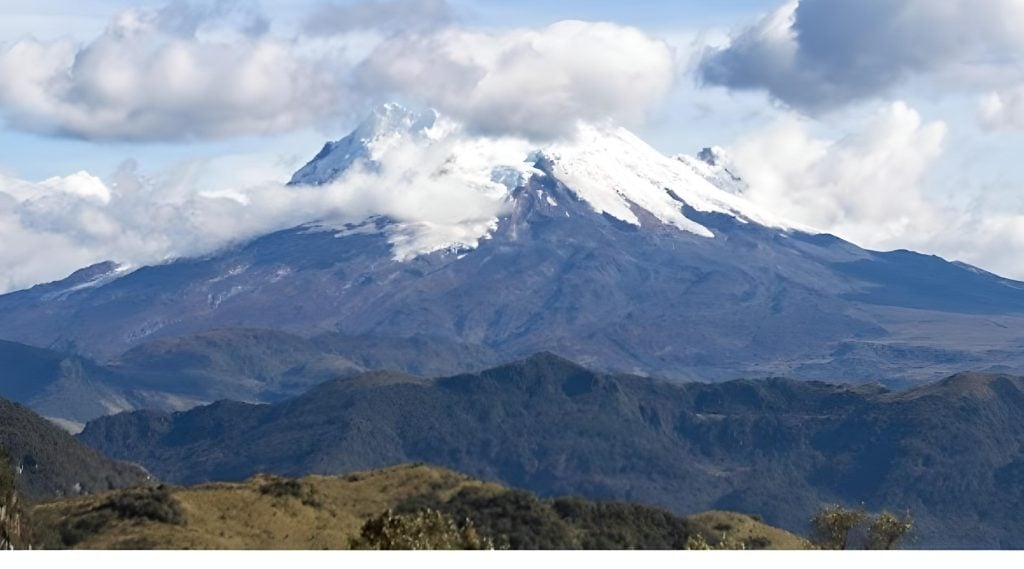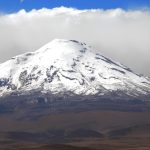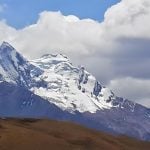Antisana Volcano: Ecuador’s Majestic Volcano
Antisana Volcano is a stratovolcano located in the Andes Mountains of Ecuador, 50 kilometers (31 mi) southeast of Quito. It is the fourth highest volcano in Ecuador, with an elevation of 5,753 meters (18,875 ft). Antisana is considered to be an active volcano, although its last eruption occurred in 1802. The volcano is home to one of the largest glacier complexes in Ecuador, which feeds numerous rivers and streams that provide water for Quito and other downstream communities. Antisana Volcano is a popular destination for climbing, hiking, and glacier trekking. The volcano is also part of the Antisana Ecological Reserve, which protects a diverse range of plant and animal life.
Where is Antisana Volcano located?
Antisana Volcano is located in the Cordillera Real mountain range of the Andes Mountains in Ecuador, 50 kilometers (31 mi) southeast of the capital city of Quito.
How high is Antisana Volcano?
Antisana Volcano has a summit elevation of 5,753 meters (18,875 ft), making it the fourth highest volcano in Ecuador.
Is Antisana Volcano active?
Yes, Antisana Volcano is considered to be an active volcano, although its last eruption occurred in 1802.
What kind of glaciers are on Antisana Volcano?
Antisana Volcano is home to one of the largest glacier complexes in Ecuador, with several types of glaciers present, including valley glaciers, cirque glaciers, and ice caps.
What plants and animals live on Antisana Volcano?
Antisana Volcano supports a diverse range of plant and animal life. The volcano’s slopes are covered in cloud forests, while the higher elevations feature paramo grasslands. This diversity of habitats supports a wide variety of species, including condors, spectacled bears, pumas, tapirs, and many species of birds.
Can I climb Antisana Volcano?
Yes, Antisana Volcano is a challenging climb, but it offers stunning views of the surrounding Andes Mountains. Climbing the volcano is best attempted during the dry season, which runs from June to September.
What other activities can I do on Antisana Volcano?
In addition to climbing, other activities such as glacier hiking, camping, and birdwatching are also popular in the area.
What is the cultural significance of Antisana Volcano?
Antisana Volcano holds significant cultural importance for the indigenous peoples of Ecuador. The volcano is considered to be a sacred mountain, and its summit was used by the Incan civilization for religious ceremonies.
What threats does Antisana Volcano face?
Antisana Volcano faces a number of threats, including climate change, glacier recession, habitat destruction, and pollution. These threats pose a significant risk to the volcano’s biodiversity and water resources.
What is being done to protect Antisana Volcano?
Conservation efforts are underway to protect Antisana Volcano and its surrounding ecosystems. These efforts include the establishment of the Antisana Ecological Reserve, research and monitoring programs, and educational initiatives.
Can I learn more about Antisana Volcano?
Yes, there are many resources available to learn more about Antisana Volcano. You can visit the websites of the Antisana Ecological Reserve, the Ministry of Environment of Ecuador, and UNESCO World Heritage Centre. You can also find information in books, articles, and documentaries.
Antisana Ecological Reserve: Information and Facts
General Information:
Location: The Antisana Ecological Reserve is located in the Napo Province of Ecuador, 50 kilometers (31 mi) southeast of Quito.
Established: It was established in 1992.
Area: It covers an area of 1,200 square kilometers (460 sq mi).
Altitude: It ranges in altitude from 1,400 meters (4,600 ft) to 5,758 meters (18,875 ft).
Natural Features:
Volcano: The Antisana Volcano is the most prominent feature of the reserve. It is the fourth highest volcano in Ecuador, with an elevation of 5,753 meters (18,875 ft).
Glaciers: Antisana Volcano is home to one of the largest glacier complexes in Ecuador, which feeds numerous rivers and streams that provide water for Quito and other downstream communities.
Habitats: The reserve encompasses a variety of habitats, including cloud forests, paramo grasslands, and alpine meadows.
Biodiversity:
Plants: Over 2,000 plant species are found in the reserve. These include Andean alder, quinoa, and moss forests.
Animals: The reserve is home to more than 500 bird species, 100 mammal species, and 40 amphibian species. These include condors, spectacled bears, pumas, tapirs, and deer.





